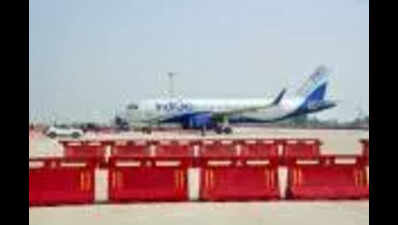New Delhi: Heavy workload on air traffic controllers at the country’s busiest airport, Delhi’s IGIA, has been cited as a contributory factor to a near miss between a departing Ethiopian Airlines plane and an incoming Vistara flight on Nov 10, 2023. The planes collectively had 227 people on board.The Ethiopian Airlines Boeing 787 was taking off from runway 29R. Around the same time, an Airbus A320 of erstwhile Vistara was to land on nearby runway 29L. The Vistara flight initiated a missed approach due to wind shear, coming into conflict with the departing aircraft. The ‘breach of separation’ led to the traffic collision avoidance system on both the planes generating a resolution advisory — tearing them apart to avoid a collision — twice.In its final report, Aircraft Accident Investigation Bureau, which probed this near miss, has cited “cognitive overload” among the contributory factors. The “controller was required to manage multiple simultaneous safety-critical tasks at a very busy airport, resulting in cognitive overload. This impaired the controller’s ability to effectively prioritise actions and respond to critical situations in a timely manner”, the report stated while listing issuing safety recommendations to Airports Authority of India. “The serious incident of airprox occurred due to a loss of situational awareness of the aerodrome controller,” it added.At the time of incident, three runways were in use: 29L and 29R for arrivals and departures, respectively, and runway 27 both for arrival and departure. Departures from runway 29R were dependent on the position of arriving aircraft on runway 29L as well as on departures from runway 27 due to weather constraints.The probe has found that when Vistara decided to abort landing, the Ethiopian aircraft was still on a taxiway and its take-off clearance could have been cancelled. “Had the take-off clearance been cancelled, the incident could have been avoided,” stated the report.Subsequently, when the conflict situation arose, a “panicking” controller “attempted to confirm Vistara flight’s altitude instead of resolving the conflict directly with Ethiopian, which was in contact with him. The controller instructed the Ethiopian crew to stop climbing at 2,600 feet and turn right… These instructions worsened the situation”, it added.











